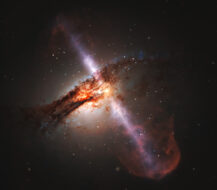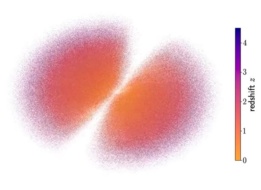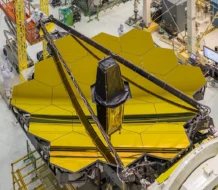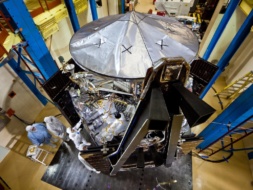There’s something mysterious happening in the universe.
It’s driving the formation of galaxies and it’s pushing outward in space, leading to an accelerated expansion.
We call the culprits behind these mysterious phenomena dark matter and dark energy, and together, astronomers believe they comprise 95% of the universe. But that’s about where our knowledge ends.
In July, ESA launched a space telescope that is on a mission to hunt down dark matter and energy and to help researchers understand how they tick. That telescope, named Euclid after the ancient Greek mathematician, has just released its first full-color images.
“Dark matter pulls galaxies together and causes them to spin more rapidly than visible matter alone can account for; dark energy is driving the accelerated expansion of the Universe,” said Carole Mundell, ESA’s science director, in a release. “Euclid will for the first-time allow cosmologists to study these competing dark mysteries together.”
The telescope is peering deep into the universe to construct a sort of 3D map of the galaxies and structures within it. It can take very wide, very sharp images in visible and infrared light much more quickly than other telescopes, which makes this large-scale mapping project possible.
Here’s a snapshot of a few of the telescope’s first observations.
The Horsehead Nebula

This one’s already a crowd favorite. Euclid’s image of the Horsehead Nebula was collected in about an hour, and shows the colorful swirls of gas and bright star-forming regions in high detail and contrast.
The bright spot in the lower left corner of the image shows UV radiation from a very bright nearby star filtering through the cold clouds of molecular hydrogen, which block out a lot of light.
The Perseus cluster

Perseus is one of the most massive structures we can see in the sky. Located about 240M light years away from Earth, the cluster consists of thousands of galaxies. This image from Euclid shows more at once than have ever been captured before. ~1,000 galaxies from the cluster are in the forefront of this image.
Astronomers believe that clusters like this can only exist due to the influence of a dark force keeping them together. Euclid will see about that.
A globular cluster

The globular cluster NGC 6397 is the second closest to Earth at ~7,800 light years away. Each star in this image is shown in remarkable detail, and the range of the image is wider than any single shot taken by another space telescope. Euclid’s wide angle view is really on display here.
The upshot: Deployment and commissioning of the telescope hit all the right marks, and not the telescope is set for a nominal mission of six years observing dark matter and energy.
“Our high standards for this telescope paid off: that there is so much detail in these images, is all thanks to a special optical design, perfect manufacturing and assembly of telescope and instruments, and extremely accurate pointing and temperature control,” Giuseppe Racca, ESA’s Euclid project manager, said in a statement.



